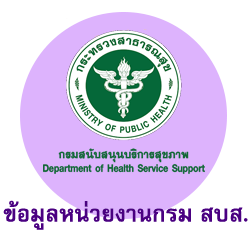ความชุกของเชื้อ Carbapenem-Resistant Enterobacteriaceae (CRE) และมาตรการควบคุมการแพร่ระบาดของเชื้อในผู้ป่วยในโรงพยาบาลตราด
คำสำคัญ:
แบบแผนความไวต่อยา, ความชุก, Carbapenem-Resistant Enterobacteriaceae (CRE)บทคัดย่อ
ปัจจุบันมีรายงานการเพิ่มขึ้นของเชื้อ Carbapenem-resistant Enterobacteriaceae (CRE) ซึ่งกำลังเป็นปัญหาในหลายประเทศทั่วโลกรวมทั้งประเทศไทย การวิจัยในครั้งนี้จึงมีวัตถุประสงค์เพื่อศึกษาหาความชุกของเชื้อ Carbapenem-resistant Enterobacteriaceae (CRE) ที่แยกได้จากสิ่งส่งตรวจในหอผู้ป่วยต่างๆ ภายในโรงพยาบาลตราด ตั้งแต่ 1 มกราคม พ.ศ. 2557 ถึง 31 ธันวาคม พ.ศ. 2561 โดยเชื้อ Enterobacteriaceae จำนวน 5,311 สายพันธุ์ ถูกนำมาศึกษาความไวต่อสารต้านจุลชีพด้วยวิธี Kirby-Bauer disc diffusion กับยากลุ่ม Carbapenems (Imipenem or Meropenem) ผลการศึกษาพบว่า ความชุกของเชื้อ CRE ในปี พ.ศ. 2557-2560 มีแนวโน้มสูงขึ้นอย่างต่อเนื่อง คือ 0.11 %, 1.27 %, 2.50 % และ 3.45 % ตามลำดับ และเป็นที่น่าสนใจที่พบว่ามี Carbapenem-resistant Escherichia coli สูงขึ้นอย่างมาก จาก 1.99 % ในปี พ.ศ. 2559 เป็น 4.82 % ในปี พ.ศ. 2560 ซึ่งพบว่าเกิดจากการระบาดภายในหอผู้ป่วยอายุรกรรมและหอผู้ป่วยหนัก ซึ่งพบมีรูปแบบของการดื้อยาที่เหมือนกัน โดยการแพร่กระจายของเชื้อนี้อาจเกิดขึ้นภายในสถานพยาบาล จากบุคลากรหรืออุปกรณ์ ภายหลังทางโรงพยาบาลได้มีการทบทวนข้อกำหนด และทำความเข้าใจที่ถูกต้องต่อแนวทางการป้องกันและควบคุมการติดเชื้อภายในโรงพยาบาล โดยการแยกผู้ป่วยและแยกอุปกรณ์เครื่องใช้ มีการปฏิบัติ Contact precautions อย่างเคร่งครัดทั้งก่อนและหลังสัมผัสผู้ป่วย รณรงค์ให้แพทย์มีการใช้ยาอย่างเหมาะสม รวมทั้งห้องปฏิบัติการมีระบบการแจ้งเตือนทางคอมพิวเตอร์ทุกรายเมื่อพบเชื้อดื้อยา ซึ่งคาดว่ามาตรการณ์ดังกล่าวนี้เป็นปัจจัยที่ทำให้ความชุกของเชื้อ CRE ในโรงพยาบาลตราดลดลงเป็น 2.30 % ในปี พ.ศ. 2561 การศึกษานี้ให้ข้อมูลที่เป็นประโยชน์ในการเลือกใช้ยาในการรักษาผู้ป่วย รวมทั้งในงานป้องกันและควบคุมการติดเชื้อในโรงพยาบาล เพื่อการเฝ้าระวังและควบคุมการติดเชื้อดื้อยาได้อย่างมีประสิทธิภาพต่อไป
เอกสารอ้างอิง
Arsheewa, Weewan. (2016). Prevalence of Carbapenemase Enzyme in Clinical Isolates ofCarbapenem-Resistant Enterobacteriaceae from Prapokklao
Hospital in 2012 – 2013. The Journal of Prapokklao Hospital Clinical Medical Education Center. 33(4): 314-325. (in Thai).
Castanheira M, Mendes RE, Woosley LN, Jones RN. (2011). Trends in Carbapenemase-Producing Escherichia coli and Klebsiella spp. from Europe and the Americas: Report from the SENTRY Antimicrobial Surveillance Programme (2007–09). J Antimicrob Chemother. 66(6): 1409–1411.
Kumarasamy KK, Toleman MA, Walsh TR, Bagaria J, Butt F, Balakrishnan R. (2010). Emergence of a New Antibiotic Resistance Mechanism in India, Pakistan, and the UK: a Molecular, Biological, and Epidemiological Study. Lancet Infect Dis. 10(9): 597–602.
Lim C, Takahashi E, Hongsuwan M, Wuthiekanun V, Thamlikitkul V, Hinjoy S. (2016). Epidemiology and Burden of Multidrug-Resistant Bacterial Infection in a Developing Country. Elife. 5:e18082.
Livermore DM. (2012). Current Epidemiology and Growing Resistance of Gram-Negative Pathogens. Korean J Intern Med. 27(2): 128.
NARST: National Antimicrobial Resistance Surveillance Center, Thailand. Retrieved March 29, 2019, from http://narst.dmsc. moph.go.th/data/map2561. Pdf (in Thai).
Netikul, Thidarat and Kiratisin, Pattarachai. (2015). Genetic Characterization of Carbapenem-Resistant Enterobacteriaceae and the Spread of Carbapenem-Resistant Klebsiella pneumoniae ST340 at a University Hospital in Thailand. PloS One. 10(9): e0139116. (inThai).
O’Neill J. (2016). Tackling Drug-Resistant Infections Globally: Final Report and Recommendations: The Review on Antimicrobial Resistance Chaired By Jim O’Neill. Wellcome Trust HM Gov Lond.
Rimrang, Benchamas and Teamwork. (2012). Emergence of NDM-1- and IMP-14aproducing Enterobacteriaceae in Thailand. Journal of Antimicrobial Chemotherapy.67(11): 2626–2630. (in Thai).
Thongkoom, Prakaithip and Teamwork. (2017). Carbapenem-Resistant Enterobacteriaceae at Rajavithi Hospital: Results of a Microbiology Laboratory Program (2009-2015). Journal of Medical Association of Thailand. 100(1): 212-220. (in Thai).
Unahalekhaka, Akeau. (2013). Epidemiology and Evidence-Based Practice Guideline in Prevention of Hospital-Associated Infection. Chiang Mai: Mingmuangnavarat Company LTD. (in Thai).
Wongprasit, Pawinee and Teamwork. (2012). Epidemiology and Clinical Review of Carbapenem- Resistant Enterobacteriaceae New Delhi Metallo Betalactamase (NDM-1) in Burirum. Khon Kaen Medical Journal. 36(3): 46–51. (in Thai).
Xia Y, Liang Z, Su X, Xiong Y. (2012). Characterization of Carbapenemase Genes in Enterobacteriaceae Species Exhibiting Decreased Susceptibility to Carbapenems in a University Hospital in Chongqing, China. Ann Lab Med. 32(4): 270–275.
Yong D, Toleman MA, Giske CG, Cho HS, Sundman K, Lee K. (2009). Characterization of a New Metallo-Beta-Lactamase Gene, bla(NDM-1), and a Novel Erythromycin Esterase Gene Carried on a Unique Genetic Structure in Klebsiella pneumonia Sequence Type 14 from India. Antimicrob Agents Chemother. 53(12): 5046–5054.
Zhang Y, Wang Q, Yin Y, Chen H, Jin L, Gu B. (2018). Epidemiology of Carbapenem-Resistant Enterobacteriaceae Infections: Report from the China CRE Network. Antimicrob Agents Chemother. 62(2).
ดาวน์โหลด
เผยแพร่แล้ว
วิธีการอ้างอิง
ฉบับ
บท
การอนุญาต
ลิขสิทธิ์ (c) 2019 Journal of Department of Health Service Support-วารสารวิชาการกรมสนับสนุนบริการสุขภาพ

This work is licensed under a Creative Commons Attribution-NonCommercial-NoDerivatives 4.0 International License.



